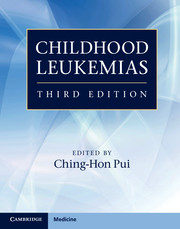Book contents
- Frontmatter
- Contents
- List of contributors
- Preface
- Section 1 History and general issues
- 1 History of leukemia: historical perspectives
- 2 Diagnosis and classification
- 3 Epidemiology and etiology
- Section 2 Cell biology and pathobiology
- Section 3 Evaluation and treatment
- Section 4 Complications and supportive care
- Index
- Plate Section
- References
2 - Diagnosis and classification
from Section 1 - History and general issues
Published online by Cambridge University Press: 05 April 2013
- Frontmatter
- Contents
- List of contributors
- Preface
- Section 1 History and general issues
- 1 History of leukemia: historical perspectives
- 2 Diagnosis and classification
- 3 Epidemiology and etiology
- Section 2 Cell biology and pathobiology
- Section 3 Evaluation and treatment
- Section 4 Complications and supportive care
- Index
- Plate Section
- References
Summary
Introduction
Precise diagnosis and classification are essential to the successful treatment and biologic study of the childhood leukemias. In broadest terms, the leukemias are classified as acute versus chronic and as lymphoid versus myeloid. The terms acute and chronic originally referred to the relative durations of survival of patients with these diseases when effective therapy was not available. With improvements in treatment, they have taken on new meanings. Acute currently refers to leukemia characterized by rapid tumor cell proliferation and a predominance of blast cells, while chronic leukemia encompasses a variety of myeloproliferative and lympho-proliferative disorders in which the predominant tumor cells show variable degrees of differentiation beyond the blast stage. The vast majority of childhood leukemia cases are acute, unlike those in adults. The most common subtype, acute lymphoblastic (also termed lymphocytic or lymphoid) leukemia (ALL) accounts for 75 to 80% of all childhood cases, while acute myeloid (also termed myelocytic, myelogenous, or non-lymphoblastic) leukemia (AML) makes up approximately 20%. By contrast, chronic myeloid leukemia (CML) represents only approximately 2% of childhood leukemias and chronic lymphocytic leukemia (CLL) is reported only rarely in children. Finally, myelodysplastic syndrome (MDS) designates a heterogeneous group of clonal diseases related to a subset of AML. It is characterized by peripheral blood cytopenias, normocellular or hypercellular but non-productive bone marrow (inefficient hematopoiesis), and dysmorphic maturation of hematopoietic precursors. It may evolve into frank AML or result in death through cytopenic complications.
- Type
- Chapter
- Information
- Childhood Leukemias , pp. 21 - 48Publisher: Cambridge University PressPrint publication year: 2012
References
- 1
- Cited by



